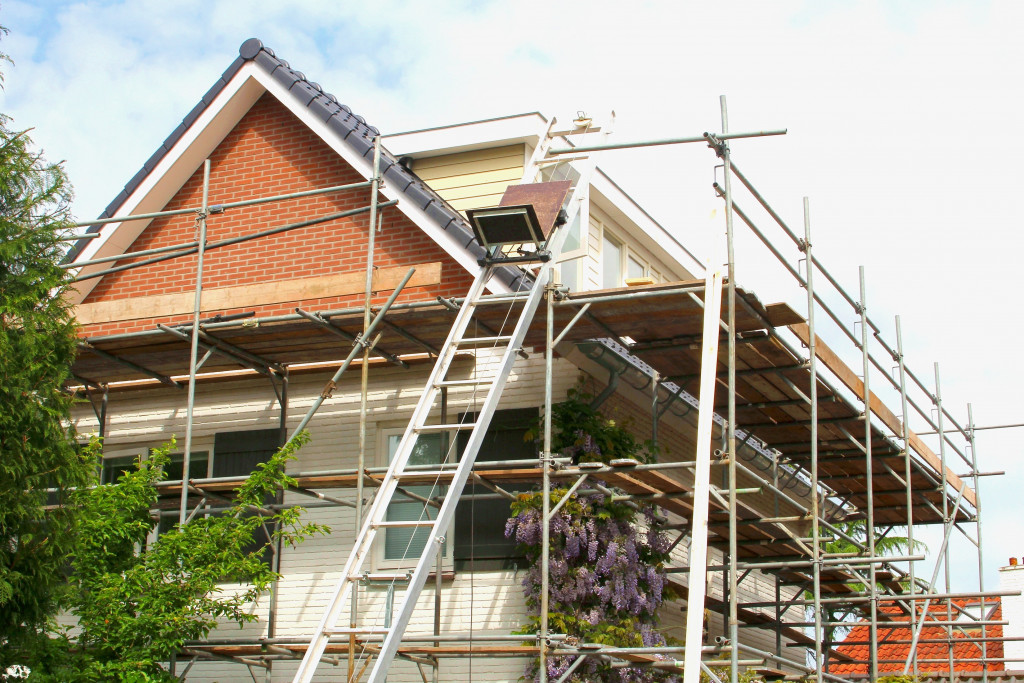Disclaimer: The Lifestyle Elf. This site provides fashion and lifestyle content for informational purposes only.
- Utilizing steel structures and incorporating reinforced concrete can ensure that your home design is stable and durable.
- Metal, asphalt, slate, and clay tiles are the most durable materials for a home’s roofing needs.
- Insulation is important in creating a stable and durable home design.
- Adequate ventilation is necessary to avoid moisture buildup and structural damage.
- Following these five tips will ensure the stability and durability of your home for years to come.
Regarding home design, stability and durability should be your top priority. The right choice of materials and construction techniques can ensure that your home stands the test of time. This article will provide five tips to help create a stable and durable home design.
1. Utilize Steel Structures
Steel is a highly robust material, which makes it an ideal choice for creating stable structures in your home. Steel structures are designed to last for several decades, meaning that once installed, these components won’t require much maintenance or replacement over time. By utilizing a reliable steel supply for your home design, you can be sure that your home will be built to last. Additionally, steel structures are lightweight and cost-effective, making them an attractive choice for many home designers.
2. Incorporate Reinforced Concrete
Reinforced concrete is another excellent choice for your home design, as it provides superior strength compared to standard concrete. You can achieve this by placing steel rods within the concrete mixture before pouring. The result is a reinforced compound that can withstand considerable impacts while providing fantastic stability. Additionally, reinforced concrete requires minimal maintenance and provides good insulation against sound, heat, and cold temperatures.
3. Choose the Right Roofing Material

Finding suitable roofing materials can make all the difference when creating a durable and stable home design. This will ensure your home stays in good condition and is protected from the elements.
Here is the most durable roofing material you can choose from:
Metal Roofing Tiles
You may want to consider metal roofing tiles if you want a durable, long-lasting solution. Metal roofing tiles can last up to 50 years or more and are highly resistant to extreme weather conditions such as hail, snow, wind, and fire. This makes them an ideal choice for areas that experience regular extreme weather events. Additionally, metal roofing tiles have good energy efficiency and can help reduce energy costs in the home.
Asphalt Shingles
Asphalt shingles might be the right option if you’re looking for a reliable roofing material with strong protection from rain and other elements. Asphalt shingles are designed to be quick and easy to install, making them a popular choice for many homeowners. They also resist rain, snow, wind, and other moisture damage. Asphalt shingles can last up to 30 years with proper maintenance.
Slate Tiles
Slate tiles are a great option if you’re looking for a long-lasting roofing material that requires minimal maintenance. Slate is highly resistant to water and fire damage, making it an ideal material for areas that experience extreme weather conditions. With proper installation and care, slate tiles can last up to 100 years or more! Additionally, they provide excellent insulation benefits and can help reduce energy costs in the home over time.
Clay Roof Tiles
Clay tiles are an excellent choice if you’re looking for a classic, timeless look for your roofing material. Clay tiles are designed to be highly durable and resistant to extreme weather conditions such as hail, wind, and fire. With proper maintenance, they can last up to 50 years or more. Additionally, clay tiles offer good insulation benefits that can help reduce energy costs in the home. They can also provide aesthetic appeal with their unique shapes and colors.
4. Consider Insulation Options

Insulation plays a vital role in creating a stable and durable home design. By keeping your house warm during the winter months and cool in the summer, insulation can help reduce operational costs while making your home more comfortable year-round. Furthermore, insulation helps protect against moisture buildup by preventing condensation from forming on walls and ceilings. Fiberglass is one of the most popular types of insulation due to its affordability and ease of installation. Additionally, spray foam offers superior insulation with minimal air leakage.
5. Add Sufficient Ventilation
Finally, ventilation is essential for ensuring that your home design is stable and durable. Poor ventilation can cause excess moisture, leading to structural damage such as rot and mold growth. Therefore, take the time to check that your home has adequate roof vents, windows, and airways throughout — this will ensure improved indoor air quality while reducing the risk of structural damage due to dampness.
To ensure that the ventilation is sufficient, it is recommended that windows be strategically placed in your home’s design. These can be used to take advantage of natural cross-ventilation, drawing fresh air into the house while replacing stale air inside. Additionally, visual cues such as windows or skylights should also be considered. For example, if your home design has a single window in the living room and bedrooms, this will not provide sufficient ventilation or natural lighting.
Final Words
Creating a stable and durable home design involves carefully selecting materials, construction techniques, and insulation options. You’ll achieve a long-lasting and robust home design by utilizing steel structures, incorporating reinforced concrete, choosing the right roofing material, considering insulation options, and adding sufficient ventilation. Follow these tips to ensure the stability and durability of your house for years to come.

